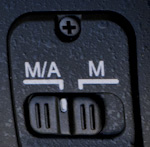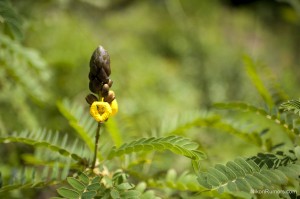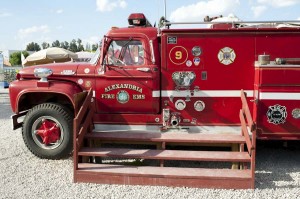I finally got the Nikkor AF-S 35mm f/1.4G lens few weeks ago from B&H and here is my quick hands-on review:
General
The 35mm is probably one of the most widely used focal lengths for photojournalism. In addition to the f/1.4G version that was introduced in September 2010, Nikon also has the AF 35mm f/2D and the AF-S 35mm f/1.8G DX lenses in their current catalog.
The size of the Nikon AF-S 35mm f/1.4G lens is almost identical to the 24mm f/1.4G:
 The lens has the regular M/A and M focus selector. The lens hood HB-59 is included, it locks tightly and it’s not easy to accidentally unlock it. The 35mm f/1.4 lens is one of Nikon’s “gold ring” products. The built quality is excellent (similar to the 24mm and 85mm f/1.4G lenses). The focus ring is smooth. Some 35mm f/1.4G users have complained that the auto focus is slow, but I could not find a reasonable way to test and prove this statement. Similar to the 85mm f/1.4G, the 35mm Nikkor does not have an ED glass (the 24mm f/1.4 lens has two ED glass elements).
The lens has the regular M/A and M focus selector. The lens hood HB-59 is included, it locks tightly and it’s not easy to accidentally unlock it. The 35mm f/1.4 lens is one of Nikon’s “gold ring” products. The built quality is excellent (similar to the 24mm and 85mm f/1.4G lenses). The focus ring is smooth. Some 35mm f/1.4G users have complained that the auto focus is slow, but I could not find a reasonable way to test and prove this statement. Similar to the 85mm f/1.4G, the 35mm Nikkor does not have an ED glass (the 24mm f/1.4 lens has two ED glass elements).
I am not sure why Nikon is still including a DOF scale on their lenses. Only one aperture (f/16) is listed, which is not very helpful:
Close ups
The minimum focus distance of 0.3 m | 0.98 ft and the fast f/1.4 aperture can create some interesting close-up images with isolated background:
All sample images were taken with a Nikon D700 at f/1.4. The photos were not post-processed in any way. I wanted to show the images the way they came out of the camera. I used Lightroom 3 to convert and resize the original NEF to JPG files. Full size samples are available on flickr.
Bokeh
Few more samples taken with the 35mm wide open at f/1.4:
Low light
Low light photos taken with the D700 at ISO 1600 and f/1.4:
Extreme lighting conditions
Lens flare and ghosting is present in some cases when pointing the lens directly at an intense light source (you can see a nice star effect in the third image, all taken at f/16):
In normal use, I did not see any flare or ghosting.
100% crop
Two 100% crops samples (click on image for the actual 100% crop):
Barrel Distortion
Barrel distortion is hardly visible on the Nikon AF-S 35mm f/1.4G lens:
Light falloff (vignetting)
The light falloff is noticeable at f/1.4, hardly visible at f/2.8 and completely gone at f/4:
Sharpness
The test chart images at different apertures shows that the lens sharpness improves at around f/4 and stays consistent till around f/11:
Please note that there could be a margin of error in those test chart comparisons.
Specifications
- Nano coating (see this video on Nano coating)
- Manual/Autofocus mode switch (M/A)
- Integrated Nikon Silent Wave Motor (SWM)
- No ED glass elements
- Rear Focusing (RF)
- One aspherical lens element (AS)
- Lens construction: 10 elements in 7 groups
- Distance window
- Angle of view: 63° (on DX body: 44°)
- Minimum focus distance: 0.3 m | 0.98 ft
- Maximum reproduction ratio: 0.2x
- Minimum aperture: f/16
- 9 diaphragm blades
- Filter size: 67mm
- Dimensions: 83 x 89.5 mm | 3.3 x 3.5 in
- Weight: 600 g | 21.2 oz
- Box includes: front lens cap (LC-67), rear lens cap (LF-4), lens hood (HB-59) and lens pouch (CL-1118)
- Price: $1,799.95 (April, 2011)
- Lens construction:
- MTF chart (how to read MTF charts):
- Brochure download link
- Nikon official sample images
Conclusion
In 2010 Nikon finally refreshed its fast primes lineup. The new f/1.4G Nikkor lenses are all good performers. I believe your selection should be based on your shooting preferences (some may argue that the 50mm f/1.4G is not on the same level as the 24, 25 and 85 versions). My personal prime lenses choice is a combination of the 24mm f/1.4G + 50mm f/1.4G + tele. Another option will be: 35mm f/1.4G + 85mm f/1.4G + tele. Having all four f/1.4G lenses (24mm, 35mm, 50mm and 85mm) is an overkill in my opinion because of the involved cost, extra weight and the fact that the focal lengths are too close to each other. If I have to get only one prime Nikkor lens, my choice would be the Nikkor 35mm f/1.4G.












































